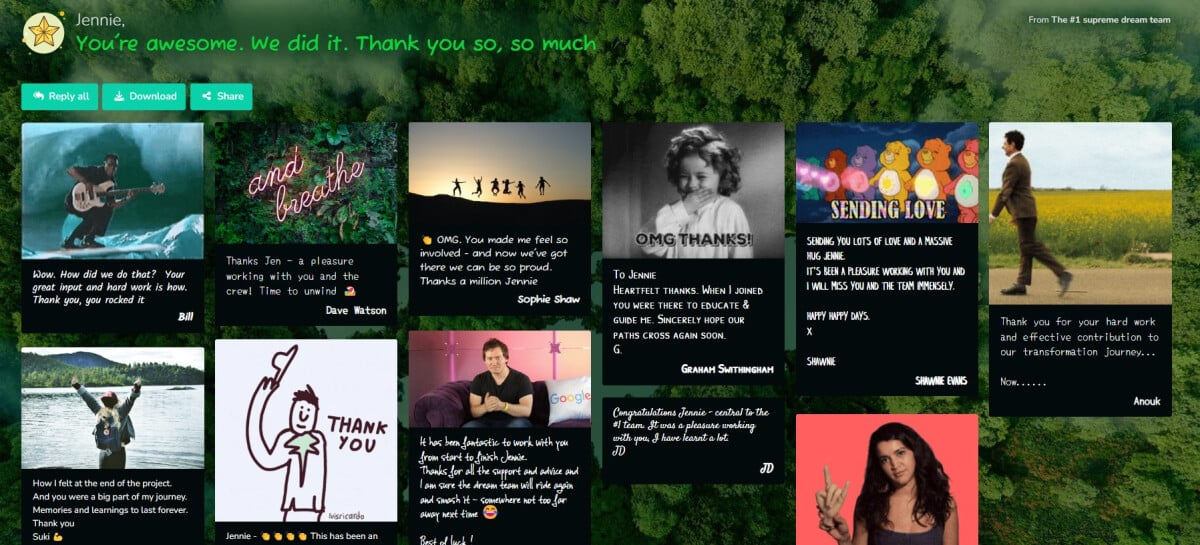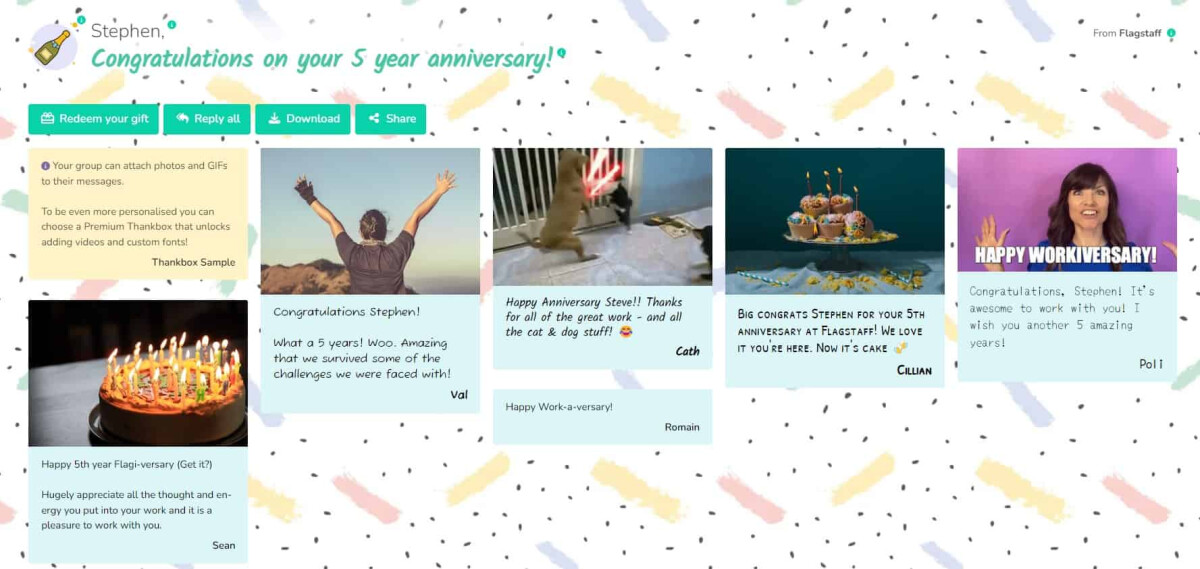Working in a Silo? Here’s How To Overcome It


Teams that collaborate effectively are undoubtedly more productive and connected than those that don’t. If you find various individuals or groups within your organisation are isolated from one another, that’s probably bad news.
And yet, as more teams go remote, we’re increasingly seeing employees working in silos. So, how can you combat this phenomenon?
At Thankbox, we understand the power of making everyone feel included, no matter the distance. That’s why we’re sharing our best practices for avoiding isolation and working effectively as a team.
Let’s get started!
What is “working in a silo?”
Working in a silo is when individuals, departments, or groups within an organisation operate in isolation from one another. This metaphor comes from agricultural silos that store grain separately– similarly, in a business context, it indicates separation. This can be manifested in a lack of communication, collaboration, and coordination between different parts of your organisation.
When an organisation is “siloed” each group or department focuses only on its specific tasks and goals, often without considering the broader organisational objectives or other teams' activities. It basically takes an ‘each person for themselves’ approach, which can be a major obstacle to your organisation’s effectiveness and company culture.
What are the dangers of working in a silo?
Aside from making your team members feel isolated from one another, working in a silo can also cause a lot of organisational slow-down. Here are the main dangers you should look out for:
Reduced efficiency: When teams do not share information or resources, it can lead to duplicated efforts or missed opportunities to streamline processes.
Poor decision-making: Decisions made without input from all relevant parts of the organisation can result in actions that are not aligned with other areas' needs or goals, potentially leading to suboptimal outcomes.
Lower innovation: Innovation often requires diverse perspectives and collaboration. Silos can stifle creativity by limiting the flow of ideas and interaction between different parts of an organisation.
Weakened morale and engagement: Employees may feel disconnected from the broader goals of the company, which can decrease their engagement and satisfaction at work.
Impaired growth and adaptation: Given that not all parts of the organisation are aligned or aware of changes, an organisation that operates in silos may struggle to adapt to changes or to implement new strategies effectively.
BUSINESS_CTA
9 tips to avoid working in a silo
1. Encourage cross-departmental communication
To foster cross-departmental communication, consider setting up regular 'lunch and learn' sessions where employees from different departments present their current projects or challenges.

This not only facilitates a better understanding of various departmental roles but also sparks conversations that can lead to innovative solutions. Additionally, creating Slack chats dedicated to specific topics can encourage ongoing dialogue across the organisation.
2. Establish shared goals and objectives
Begin by organising workshops and team-building activities where leaders and team members from various departments collaborate to define the company’s key priorities and how each team contributes towards these goals.
Make these shared objectives part of performance evaluations to ensure they are taken seriously. This alignment helps everyone understand how their work impacts the broader company goals, promoting a more unified effort towards achieving them.

When you achieve those goals, make sure that your team’s efforts don’t go unnoticed. Passing a Thankbox around the office can help your employees see the value in their teamwork. Knowing that their hard work isn’t going unnoticed will encourage them to stick together.

Thankbox lets your colleagues send personalised messages filled with GIFs, photos, and videos. You can even include gift cards (from a selection of over 700 retailers) and flower deliveries. It’s an amazing way to boost staff morale while laying the groundwork for open communication and collaboration.
3. Implement collaborative project management tools
Choose a project management tool that supports real-time collaboration and is accessible to all departments. Tools like Asana, Trello, or Microsoft Teams allow team members to track progress, share documents, and communicate updates seamlessly.
Provide training for all employees on how to use these tools effectively to ensure everyone is competent and comfortable contributing to shared projects.
4. Promote an inclusive company culture
Develop a company culture that values diverse perspectives and collaborative work. Leadership can encourage this by modelling inclusive behaviours, recognizing and rewarding teamwork, and actively seeking input from all levels of the organisation.
Host regular diversity and inclusion training sessions to educate employees about the importance of an inclusive workplace and how they can contribute to it.
5. Organise regular interdepartmental meetings
Schedule monthly or quarterly meetings that bring together representatives from different departments to discuss ongoing projects, address any challenges, and explore potential collaborations.
Structure these meetings to allow each department to share updates and receive feedback from others. To keep these meetings productive, prepare a clear agenda in advance and ensure follow-ups on discussed items are tracked and reported in subsequent meetings.

6. Create cross-functional teams for projects
To enhance collaboration and reduce silos, form cross-functional teams for specific projects. These teams should include members from various departments who bring different skills and perspectives.
Ensure that each team has a clear mandate and defined roles to prevent overlap and confusion. Regularly rotate team members for different projects to spread the collaborative mindset throughout the organisation and give everyone a chance to understand and appreciate the challenges and workflows of different departments.
7. Offer incentives for collaborative success
Motivate employees to work collaboratively by linking part of their incentives or bonuses to teamwork and the successful completion of joint projects. Establish clear criteria for what constitutes collaborative success, such as meeting project deadlines, staying within budget, and achieving set objectives with high satisfaction ratings.
Celebrate these successes publicly to recognize the efforts of the teams, which reinforces the value of collaboration and encourages others to emulate this behaviour.
When you celebrate milestones, you should do so with a Thankbox. Employees love to feel recognised by their organisation. When they see collaborative efforts acknowledged from higher up, they’ll be motivated to work harder as a team.

8. Ensure transparency in processes and decisions
To build trust and foster a collaborative environment, promote transparency in all organizational processes and decisions. You can achieve this by openly sharing information about project statuses, company decisions, and strategic directions through regular updates in meetings, on internal communication platforms, or via email newsletters.
When employees are well-informed, they are more likely to contribute effectively and feel valued and trusted, which are crucial components of a collaborative workplace.
9. Provide training on the benefits of teamwork and collaboration
Invest in regular training sessions to highlight the benefits of teamwork and collaboration. Cover topics such as effective communication, conflict resolution, and the importance of diverse perspectives in problem-solving.
Training should also include practical exercises that allow employees to experience the advantages of working collaboratively, thus reinforcing the training material and showing real-world applications of these concepts.
Wrapping up
If you follow our guidance for collaborating effectively as a team, you’ll be well on your way to avoiding working in a silo at your organisation.
That said, maintaining a culture of teamwork requires consistent effort. Don’t let up on the activities we recommended, your team will thank you for it.
Remember, if you want to reward teamwork consistently, try creating a Thankbox. It only takes a few clicks to send a message of gratitude around the office and keep everyone engaged.
BUSINESS_CTA
Images: Cover | Colleagues taking photos of their food | Celebrating | Making a deal





